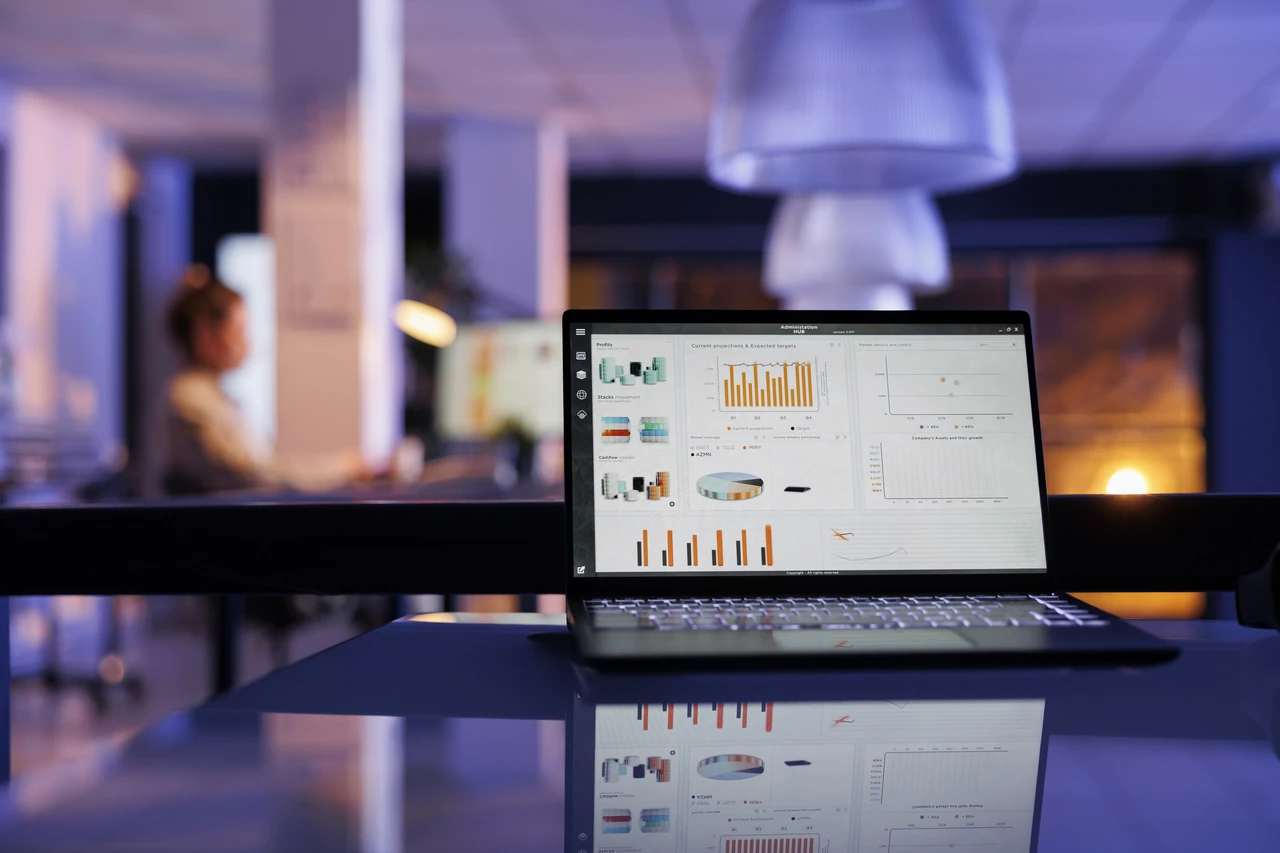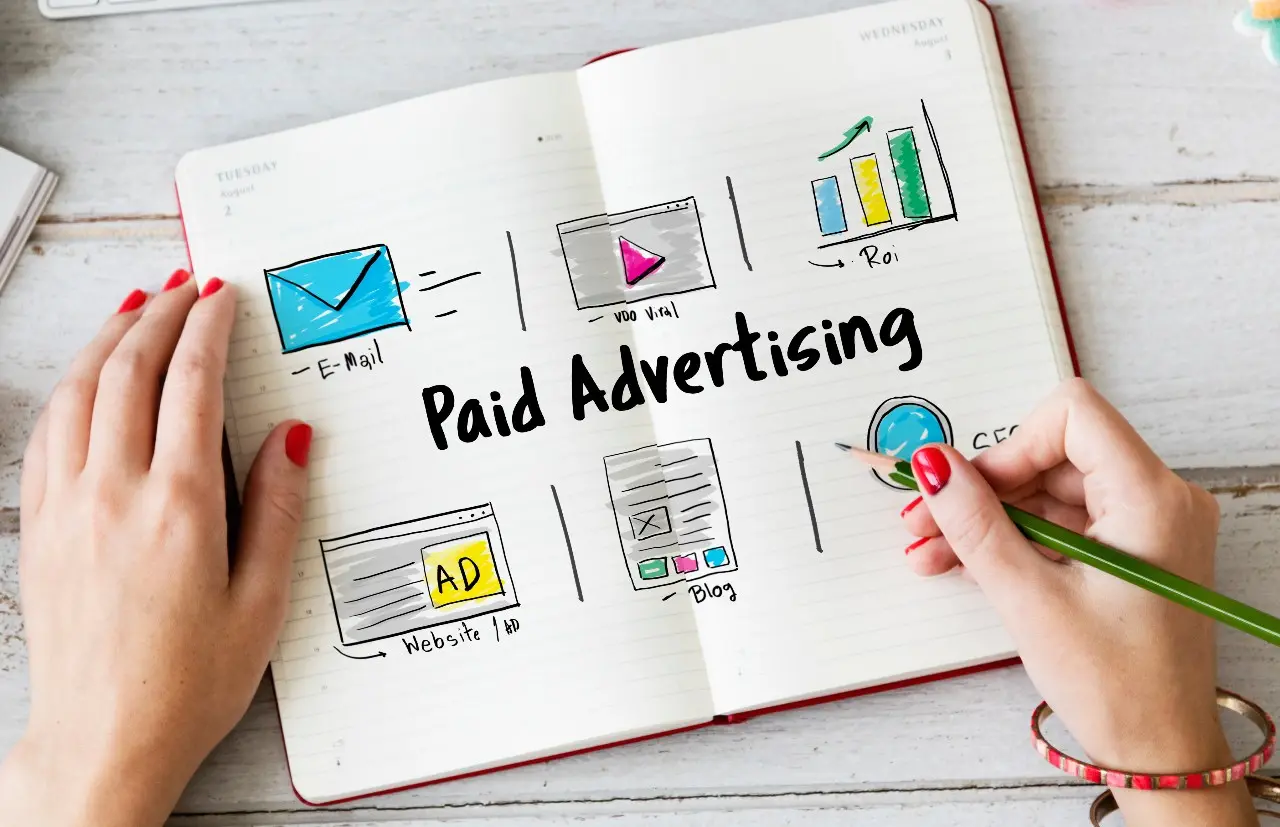Listen to article
In today’s multi-screen world, understanding device behavior statistics is no longer a nice-to-have, but a must-have for marketers and businesses alike. With users seamlessly switching between smartphones, tablets, and desktops, it’s crucial to know how each device influences online behavior.
Are mobile users more prone to impulse purchases? Does desktop still reign supreme for B2B content consumption? Which ad formats resonate best on each platform? These are some questions you should ask when planning your marketing strategy.
As we move into 2025, deciphering these device-specific nuances can make or break your marketing campaigns. Let’s explore the latest device behavior trends across mobile and desktop, providing you with actionable insights to optimize your strategies for maximum impact.
Platform-Specific Ad Preferences: Insights for Smarter Campaigns
Creating high-performing ads requires more than compelling copy—it demands an understanding of how user behavior shifts across platforms. Different ecosystems foster unique user mindsets, and aligning your ad formats with these preferences can make or break a campaign. Here’s a closer look at how audiences engage with ads on YouTube, Amazon, and Google:
- YouTube: Visual storytelling reigns supreme, with 36% of users favoring video ads. YouTube’s dominance in video content consumption makes engaging video campaigns a natural fit here. Source
- Amazon: 50% of users here respond best to product listing and shopping ads, underscoring the platform’s role as a purchase-intent powerhouse. Ads that showcase product details and pricing can seamlessly guide users further down the sales funnel. Source
- Google: Search users value efficiency; 55% of Google users prefer text ads that deliver concise, actionable insights directly correlating to their search queries. This points to the importance of using highly targeted keywords in ad copy. Source
Takeaway: Match Ad Formats to Audience Intent
The key to impactful advertising lies in recognizing the unique behaviors and expectations of users across platforms. YouTube users lean into visual engagement, Amazon audiences are primed for shopping, and Google searchers prioritize efficiency. By customizing ad formats to align with these tendencies, you can ensure your campaigns feel natural, relevant, and effective.
Pro Tip:
Leverage platform analytics to uncover deeper insights into user interactions with your ads. Pair these insights with regular A/B testing to refine both creative elements and formats, ensuring you stay ahead of shifting audience preferences and consistently drive better results.
The Rise of Mobile Engagement: Insights into User Behavior
The balance of online traffic between mobile and desktop has shifted dramatically in recent years, with mobile emerging as the clear frontrunner. This isn’t just a fleeting trend—it reflects how users are prioritizing convenience and accessibility in their digital interactions. For businesses, this shift calls for an adaptive approach that considers the distinct behaviors and expectations of mobile users compared to desktop users.
- Mobile phones account for a significant 64.04% of all internet traffic as of November 2024, dwarfing desktop’s 35.96% share. Source
- Mobile devices drive 54% of all website traffic. Source
- The number of mobile users in the US is projected to increase by 15.6 million between 2024 and 2029, indicating sustained growth in mobile internet usage. Source
Takeaway: Mobile Optimization Isn’t Just a Strategy—It’s Survival
The dominance of mobile traffic isn’t surprising, but its continued growth is a call to action for businesses that haven’t fully embraced mobile-first strategies. Beyond simply ensuring websites are mobile-friendly, brands need to design experiences that reflect how consumers interact differently on mobile. Think shorter load times, thumb-friendly navigation, and content that’s easily digestible on smaller screens. Not adapting risks alienating the majority of online users who are already leaning into mobile-first engagement.
Don’t just optimize your website for mobile—analyze how users behave when accessing content on different devices. Use insights like bounce rates, session durations, and conversion metrics segmented by device to identify friction points in your mobile experience. Additionally, leverage tools like Google’s Mobile Usability Test and responsive design frameworks to stay ahead of user expectations.
For businesses looking to adapt their online presence to this evolving landscape, implementing comprehensive digital marketing strategies for small businesses can help ensure they remain competitive. From mobile optimization to user-centric design, having a well-rounded strategy is critical to capturing and retaining your audience across devices.
Why Desktop Still Holds Its Ground in the Digital Landscape
While mobile devices dominate overall internet traffic, it would be a mistake to underestimate desktop’s enduring influence in certain spheres—especially in B2B environments and when it comes to high-value online activities. Desktop usage is often associated with tasks that require deeper focus, larger screen real estate, and precision, making it indispensable for specific user journeys. Understanding where desktop excels can help marketers fine-tune strategies to drive meaningful engagement and results.
- A significant 62% of B2B decision-makers still favor consuming content on a desktop or laptop, highlighting the importance of optimizing content for larger screens in the B2B sector. Source
- Desktop users still exhibit a higher conversion rate (3%) compared to mobile users (2%), indicating potential challenges in the mobile shopping experience. Source
- The top three Google search ads receive 95% of clicks on desktop devices, demonstrating the intense competition and importance of high ad placement on desktop. Source
Takeaway: Leverage Desktop’s Strengths for Strategic Wins
Desktop may not generate the same volume of traffic as mobile, but its value lies in intent-driven, high-conversion interactions. For marketers, this means taking a closer look at how your audience uses different devices and creating tailored experiences that align with these behaviors. Whether it’s optimizing long-form B2B content for desktop consumption or running competitive Google Ads tailored for desktop users, aligning your strategies with desktop’s strengths is key to driving ROI.
Pro Tip:
Treat desktop as your testing ground. Analyze how well your content and ads perform on desktop screens, then apply those learnings to other platforms. Tools like Google Optimize can help you run A/B tests to refine ad copy, placements, and landing pages for maximum impact. This deeper insight can elevate both desktop and mobile campaigns, ensuring your strategy is comprehensive and forward-looking.
Mobile Dominates E-commerce, but Desktop’s Precision Still Matters
As mobile usage cements its position as the leading force in e-commerce, businesses must navigate the fine balance between maximizing mobile engagement and leveraging desktop’s conversion potential. While smartphones drive the majority of site traffic and purchases, desktop devices still hold a unique strength: delivering higher-intent, more deliberate buying decisions. Adapting your strategy to these nuanced consumer behaviors is not just an option—it’s a necessity.
- Smartphones accounted for over 75% of retail site visits and 66% of online shopping orders in the U.S. during the first quarter of 2024. Source
- Approximately 41% of mobile device users have made a purchase after being exposed to a relevant advertisement on their device. Source
- Mobile users are 40% more likely to make impulse buys compared to desktop users, showcasing the power of mobile’s convenience and personalized experiences in driving spontaneous purchases. Source
The data makes it clear: mobile is no longer just a supplementary channel—it’s the front door to e-commerce for the majority of consumers. However, desktop devices continue to carry weight when it comes to conversions, as they often cater to users who are further along in the decision-making funnel. To truly optimize performance across devices, consider meeting consumers where they are in their journey, leveraging mobile for discovery and engagement while using desktop’s strengths to close the deal.
Pro Tip:
Build a seamless cross-device experience to reduce drop-offs between mobile browsing and desktop purchasing. This includes mobile-friendly designs, strategically placed retargeting ads, and unified shopping carts that sync across devices. Additionally, integrate one-click payments and simplified navigation to make mobile checkout effortless while encouraging desktop users with deeper, long-form content or exclusive offers.
Tackling the Challenge of Mobile Bounce Rates: Insights and Optimization Tips
Mobile bounce rates are more than just a number—they’re a window into how effectively your site caters to on-the-go users. With mobile devices dominating web traffic, engaging this audience requires more than responsive design; it demands a seamless, fast, and intuitive user experience. Understanding bounce rates is a step toward identifying friction points that could be causing users to leave without exploring your content further. Let’s examine the numbers and uncover actionable strategies.
- Globally, mobile devices report the highest bounce rate at 52.11%, significantly outpacing desktop and tablet devices. Source
This statistic highlights a crucial truth: many mobile users face barriers, be it slow-loading pages or navigation challenges, that deter them from staying engaged. Ignoring mobile-specific optimization leaves potential customers slipping through the cracks—something no business can afford in today’s competitive digital landscape.
Takeaway: Optimizing for a Mobile-First Audience is Non-Negotiable
With more than half of mobile users bouncing off websites, it’s clear that brands must prioritize mobile optimization to retain engagement and drive conversions. Start by addressing key factors such as page speed, intuitive design, and mobile-friendly content. A slow, cluttered, or confusing site experience can quickly lead users to bounce—taking their business elsewhere.
Don’t just test for speed; test for usability. Regularly audit your mobile site on various devices, browsers, and screen sizes to identify and eliminate issues that may go unnoticed. Tools like Google’s PageSpeed Insights or BrowserStack can help you fine-tune performance and ensure your mobile experience exceeds user expectations.
For businesses struggling to keep up with the demands of a mobile-first audience, full-service marketing solutions can offer a comprehensive approach. By integrating SEO, content creation, and user experience optimization, these services can help bridge the gap between mobile and desktop users, ensuring consistent performance across devices.
Mobile’s Impact on Digital Advertising: Statistics You Need to Know
As consumer behavior shifts further into the mobile-first realm, the significance of mobile advertising has skyrocketed. From searches to paid ad clicks, mobile devices are the driving force behind digital engagement—and this trend is only set to grow. For marketers, understanding mobile user behaviors isn’t just helpful; it’s vital for staying competitive in an increasingly mobile-centric ecosystem.
- Approximately 70% of search ad impressions in the U.S. occur on mobile devices. Source
- A large majority, 82%, of mobile users actively conduct searches on their mobile devices. Source
- More than half, 52%, of PPC ad clicks originate from mobile users. Source
- Paid search impressions on mobile platforms constitute approximately 70% of the total. Source
- Mobile users show a higher likelihood, around 6-8%, of clicking on PPC advertisements that include a phone number. Source
- Google captures a significant portion of the mobile paid advertising market, driving 95% of all paid search ad clicks on mobile devices. Source
- Global mobile ad spending is projected to reach approximately $399.6 billion by the end of 2024, indicating a substantial investment in mobile advertising channels. Source
- Mobile devices are expected to dominate search advertising, accounting for 61% of all ad spending in the search advertising market by 2029. Source
- By 2028, mobile devices are projected to generate $251.1 billion in ad spending within the search advertising market. Source
The dominance of mobile devices in search advertising is an undeniable reality, reflecting their role as the go-to tool for instant information and transactional actions. With mobile ad spending nearing unfathomable heights, marketers must invest in strategies that prioritize clarity, speed, and user experience on mobile platforms to capture this growing audience.
Pro Tip:
Don’t overlook mobile ad features like click-to-call functionality. Including a phone number in your ads is proven to boost mobile click-through rates, making it the perfect way to connect with users ready to take action.
The Evolution of Mobile Advertising
With mobile devices now acting as an extension of consumers’ everyday lives, mobile advertising is undergoing a transformative shift. Gone are the days of generic banner ads dominating screens—today, advertisers are striving to deliver personalized, interactive, and highly relevant experiences that align with user behavior in real time. Whether through native ads that seamlessly blend into app environments or location-based campaigns that reach users at the perfect moment, advertisers have unparalleled opportunities to captivate their audiences.
- Advertisers are moving beyond static banner ads, opting for more immersive and interactive ad formats that enhance the mobile user experience. Source
- Native advertising is gaining momentum as it integrates seamlessly into mobile apps and websites by mirroring the surrounding content’s aesthetics and tone. Source
- Location-specific digital campaigns outperform traditional banner ads by 20 times, reaching users at the exact geographic point where their intent aligns with the offering. Source
- A staggering 65% of high-purchase-intent searches result in an ad click, proving the significant role of well-targeted mobile ads in converting ready-to-act users. Source
As the mobile advertising landscape grows increasingly dynamic, delivering high-impact experiences through native formats and precise location targeting has become essential for driving results. These strategies not only improve the relevance of ads but also help brands connect with audiences at moments that matter most—whether they’re researching products near a store or looking for solutions on the go.
Pro Tip:
Don’t limit your mobile strategy to one-size-fits-all formats. Invest in A/B testing for ad types, visuals, and location-specific messaging to discover what resonates most with your audience. Combining real-time insights with emerging ad trends will set your campaigns apart and optimize ROI.
Short-Form Video: The Key to Mobile Engagement
As mobile devices continue to dominate how people consume content, the need for fast, visually engaging experiences has grown exponentially. Short-form videos, designed to captivate attention in mere seconds, are perfectly suited for this shift in consumer behavior. They’re not just a passing trend—they’re now central to how brands connect with users across platforms like TikTok, Instagram Reels, and YouTube Shorts.
- Brands are projected to continue increasing their investments in platforms like YouTube, TikTok, and Instagram, leveraging video content to engage with consumers. Source
- Engagement with short-form video is remarkably high, with nearly all videos being watched for over 40% of their duration. Source
- A significant portion (59%) of short-form videos retain viewers for 41-80% of their length, and 30% boast an average watch rate exceeding 81%. Source
- 55% of B2B marketers report that short-form, social videos generate the highest ROI, outperforming other content formats like case studies and webinars. Source
These statistics underscore the unparalleled ability of short-form video to command attention and foster engagement, particularly on mobile devices where screen sizes and user patience are limited. For B2B marketers, this format isn’t just effective—it’s essential for staying relevant and competitive in an increasingly mobile-first market.
Don’t just focus on brevity—invest in storytelling. Use the first 3-5 seconds of your video to hook the viewer emotionally or intellectually. Incorporate captions for silent viewers, and always include a clear call-to-action to drive measurable results.
Mastering Device Preferences for Email Marketing Success
In the realm of email marketing, understanding user behavior across devices isn’t just useful—it’s transformative. While mobile devices dominate in accessibility and convenience, desktops continue to hold their ground in business and professional settings. This duality means marketers must adopt a versatile approach to ensure emails not only reach inboxes but also resonate with recipients no matter the device.
- Nearly half of global internet users with mobile devices prefer to receive communications from businesses via email, emphasizing email’s central role in mobile communication. Source
- Mobile email opens accounted for 41.6% of all email opens in 2021, illustrating the growing reliance on mobile devices for email consumption. Source
- Email open rates on mobile devices spike during the holiday season, highlighting the importance of adapting campaigns to seasonal user behaviors for maximum engagement. Source
- By mid-2023, 56% of email marketing professionals were already prioritizing optimizing email designs for mobile, showcasing the shift toward creating seamless mobile-friendly experiences. Source
To craft winning email campaigns in this multi-device landscape, it’s not enough to choose between mobile or desktop—marketers need to create experiences tailored to both. Mobile-first strategies should focus on concise designs, bold CTAs, and rapid load times, while desktop layouts can provide more detailed content for professional audiences. Neglecting either channel could limit effectiveness and diminish ROI.
Leverage dynamic email elements like collapsible menus and adaptive images to elevate your responsive design game. These features not only enhance usability across devices but also make your marketing messages more visually engaging, boosting retention and click-through rates.
Tackling Ad Blockers with Strategic Mobile and TikTok Marketing
As digital advertising evolves, so do the ways users interact with—and avoid—ads. With ad blocker adoption rising steadily, especially among younger audiences, marketers need to rethink how they deliver value through their advertising. Learning how to navigate these challenges is key to staying visible in a crowded digital landscape. Mobile platforms and TikTok, in particular, offer unique opportunities to adapt.
- Around 15% of smartphone users in the United States currently use ad blockers, underscoring the challenges for mobile advertisers. Source
- Gen Z Ad Resistance: A striking 51% of Generation Z users block ads, making it imperative for brands to find more creative and authentic ways to reach this audience. Source
- TikTok’s Ad-Friendly Audience: While general internet users show only a 4% openness to ads, a notable 38% of TikTok users are receptive to advertising—a substantial difference that highlights the platform’s potential for engagement. Source
Ad Blocking is a Challenge – But Not the Final Barrier
The rise in ad blocker usage, particularly on mobile devices, offers a clear insight: intrusive or irrelevant ads are no longer tolerated, especially by younger, tech-savvy users like Gen Z. However, platforms like TikTok demonstrate that users are willing to engage with well-crafted ads that align with their preferences and add value to their experience. This opens the door for marketers to lean into storytelling, creativity, and community-driven campaigns.
Make trust and authenticity the cornerstone of your strategy. Instead of fighting ad blockers, experiment with formats like native advertising, user-generated content (UGC), and influencer partnerships to bypass resistance effortlessly. For TikTok, embrace the platform’s culture by producing entertaining, trend-aligned content that feels like an organic part of the user’s feed—this will naturally drive audience engagement and minimize ad avoidance.
The Power of Ad Placement in PPC Campaigns
In the competitive landscape of pay-per-click (PPC) advertising, where visibility directly influences performance, securing top ad placements is more critical than ever. With users increasingly gravitating toward the first few results on search engine results pages (SERPs), the battle for top positions is as much about strategy as it is about spending. For advertisers, understanding click distribution trends can serve as a roadmap for optimizing campaigns across both desktop and mobile devices.
- The top three pay-per-click (PPC) ads capture 46% of all clicks, underscoring the significance of being among the first results users see. Source
- On desktop, the dominance of high placement is even more pronounced, with 95% of clicks going to the top three Google search ads. Source
Key Takeaway: The Stakes Are Higher on Desktop
The data paints a clear picture: while mobile search continues to grow, desktop users demonstrate a more concentrated click behavior, making top-three ad positioning essential for capturing their attention. In fact, the near-monopoly of clicks by top ads on desktop suggests that even fourth or fifth-ranked ads might struggle to gain meaningful traction. If your audience skews toward desktop users, prioritizing premium placement through competitive bidding, hyper-relevant keywords, and optimized ad copy isn’t just a tactic—it’s a necessity to remain visible and competitive. However, these trends also emphasize the importance of balancing strategy across devices, as mobile behaviors may differ slightly in terms of engagement and placement influence.
To secure those coveted top spots, think beyond just increasing bids. Focus on improving your Quality Score by refining your ad relevance, keyword alignment, and landing page experience. A higher Quality Score reduces your cost per click (CPC) while improving your overall ad rank—allowing you to stretch your budget further while dominating the SERPs. And don’t forget: consistent A/B testing for ad creatives and audience targeting can help uncover what resonates most with your ideal audience.
Conclusion
The evolving dynamics between mobile and desktop usage reveal a fascinating interplay of user preferences, platform strengths, and marketing opportunities. Mobile devices dominate internet traffic and e-commerce activity, driving on-the-go decisions and fostering impulse purchases. Yet, desktop remains an essential touchpoint for B2B content consumption and high-value actions, underscoring the need for a balanced, device-specific strategy. From the rise of short-form video on mobile to the steadfast relevance of desktop for high-conversion PPC ads, these insights highlight the critical importance of tailoring campaigns to match user behavior.
For marketers, the takeaway is clear: success lies in agility and precision. Whether it’s optimizing for mobile-first experiences, prioritizing ad placements on desktop, or leveraging native and location-specific ad formats, each strategy must align with how audiences interact across devices.
Ready to boost your traffic and grow your website? Your customers are looking for you, and our SEO services can help you be found across search engines. Equip your business with strategies that resonate with today’s multi-device users and drive measurable results—every click counts.
About Creating Device Behavior Statistics and Ad Performance Trends
This guide was written by the Scopic Studios team and reviewed by Araksya Hakobjanyan, SEO Lead at Scopic Studios.
Scopic Studios delivers exceptional and engaging content rooted in our expertise across marketing and creative services. Our team of talented writers and digital experts excel in transforming intricate concepts into captivating narratives tailored for diverse industries. We’re passionate about crafting content that not only resonates but also drives value across all digital platforms.
Note: This blog’s images are sourced from Freepik.

































































































































































































































































